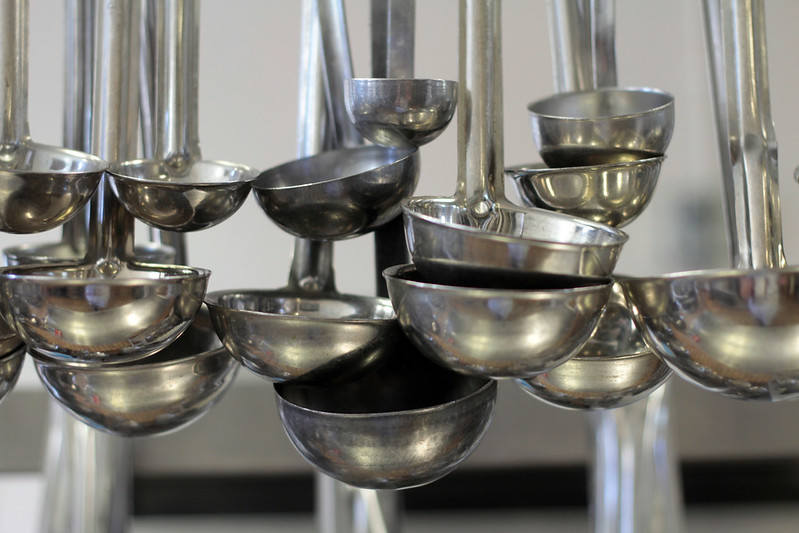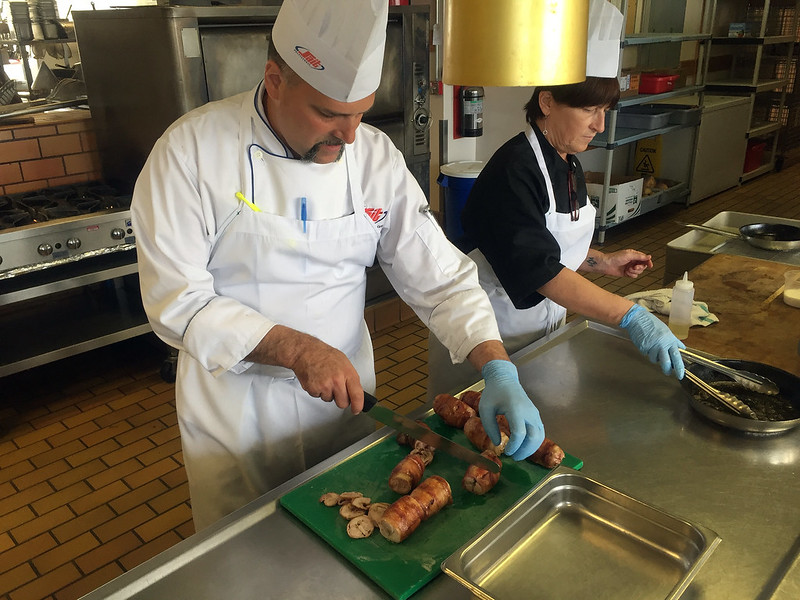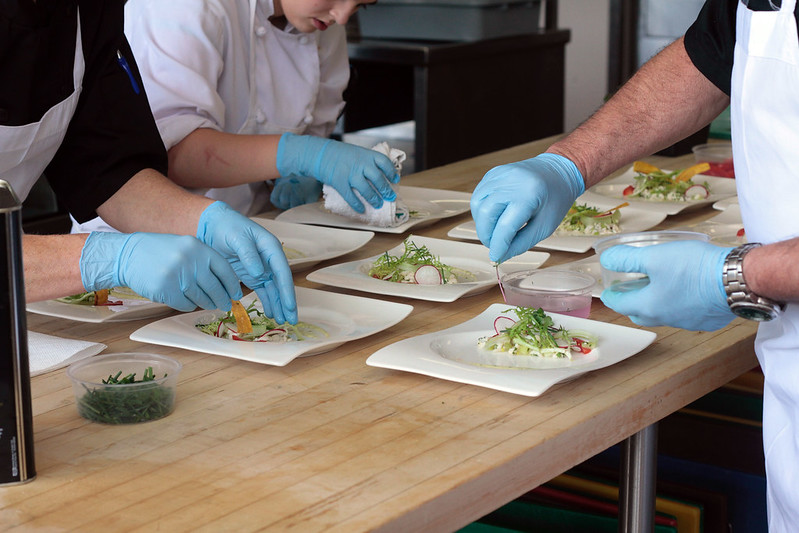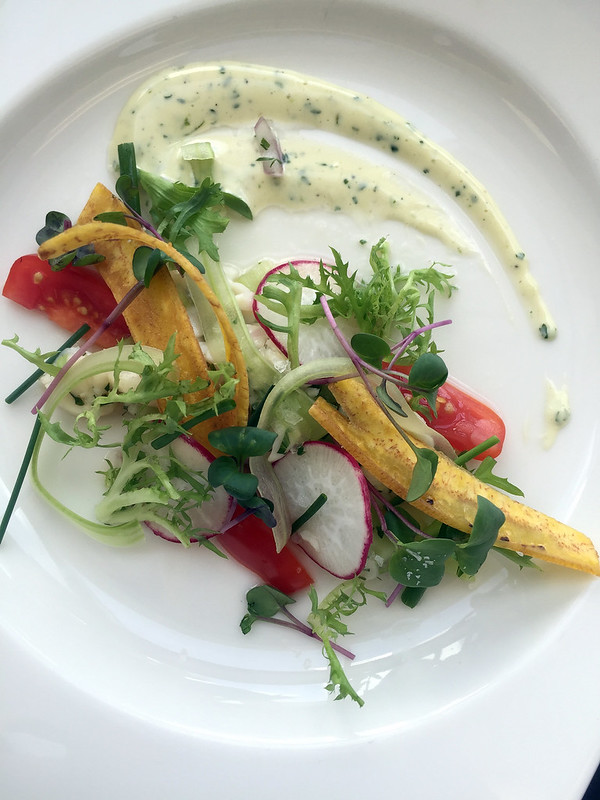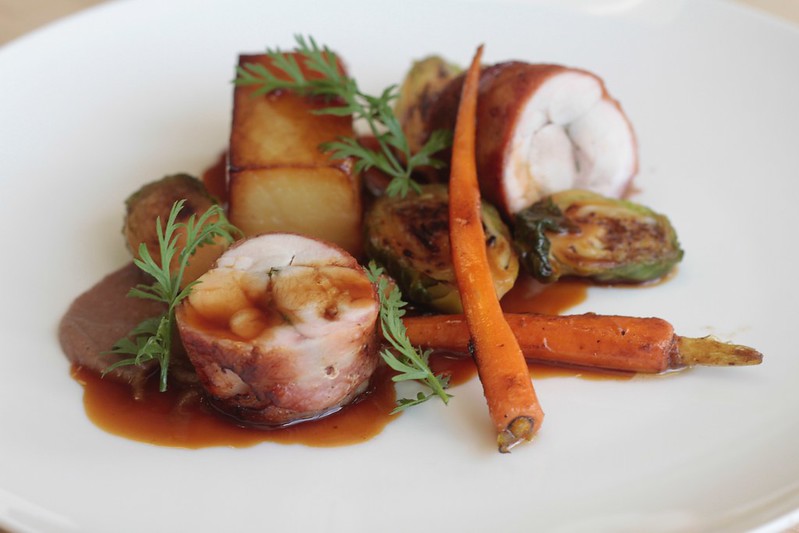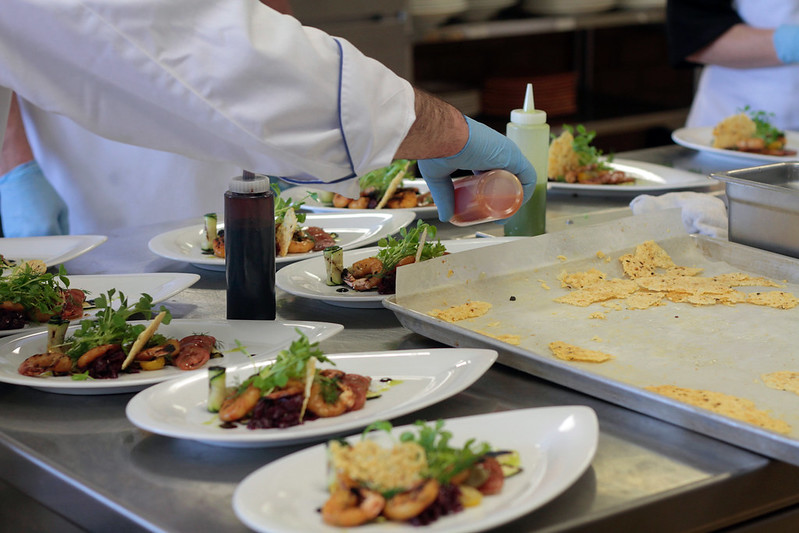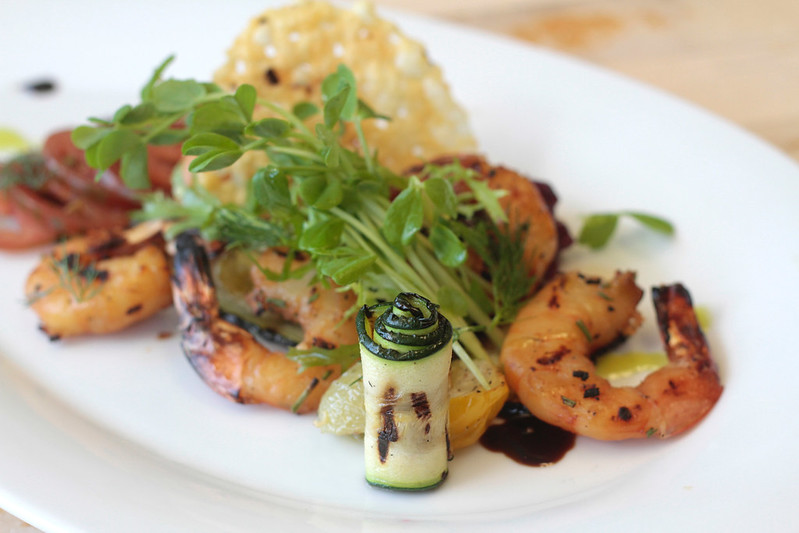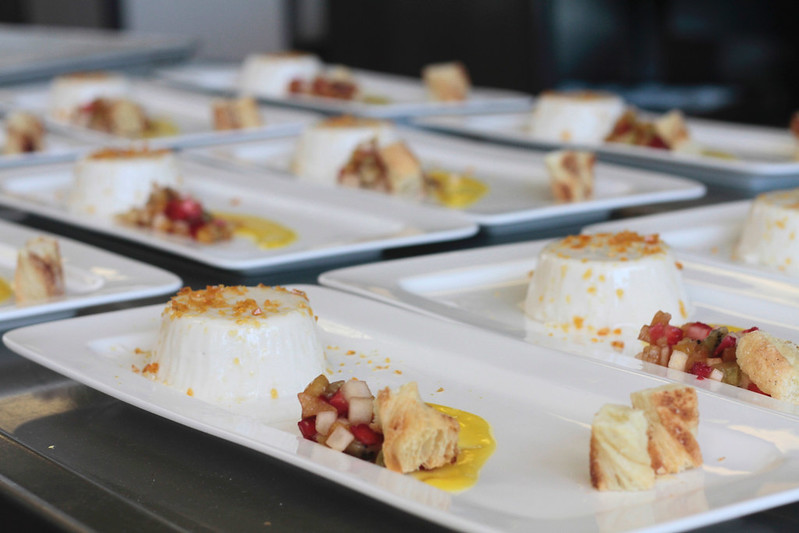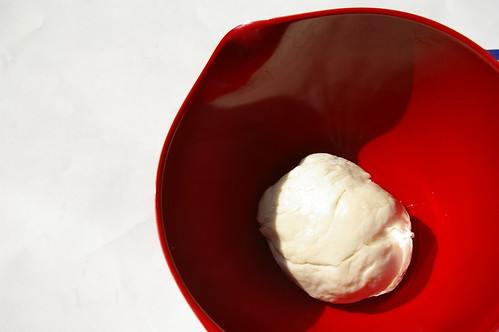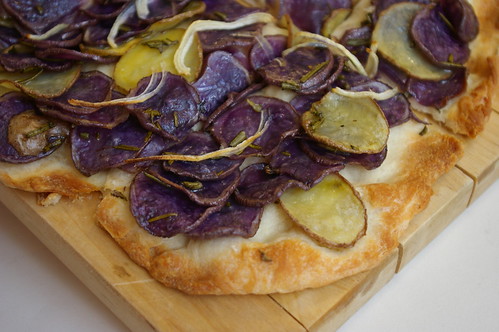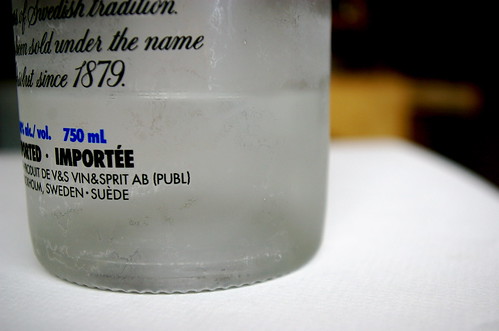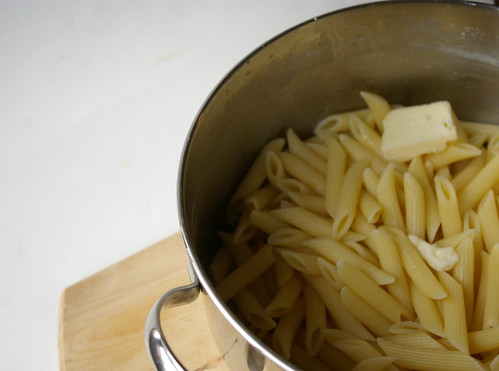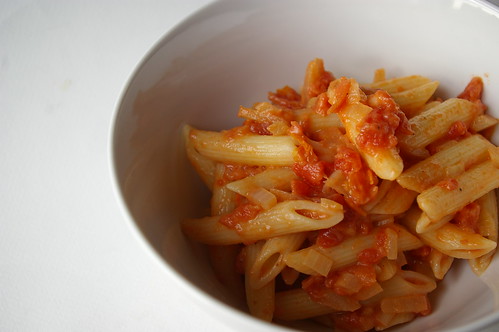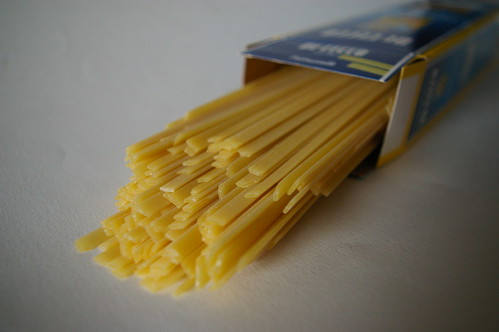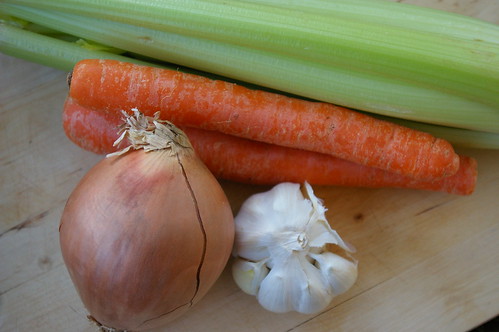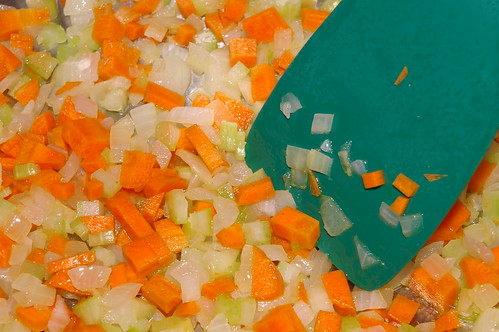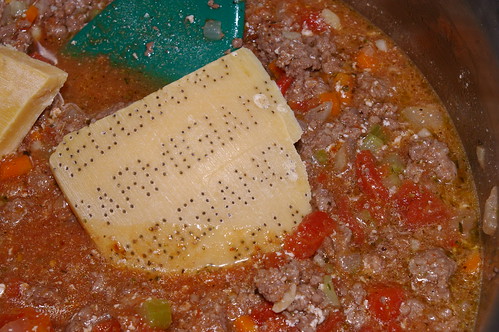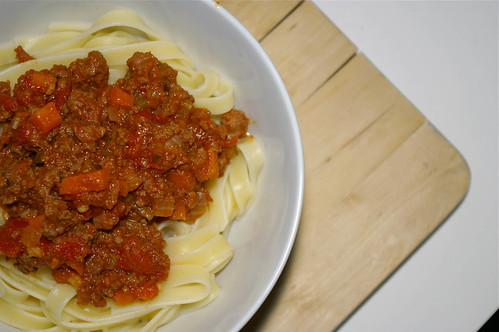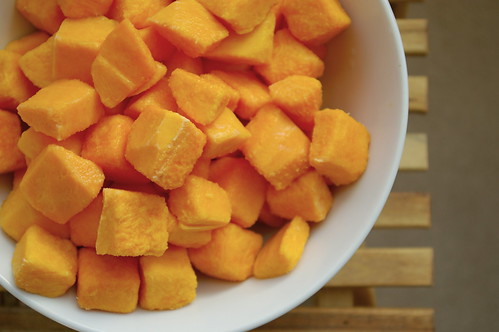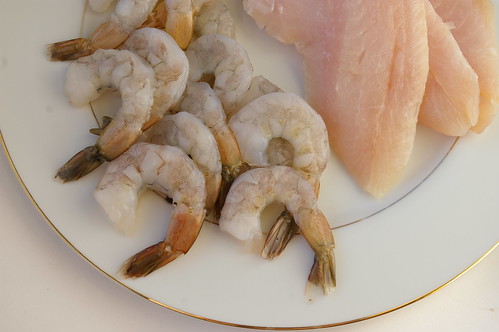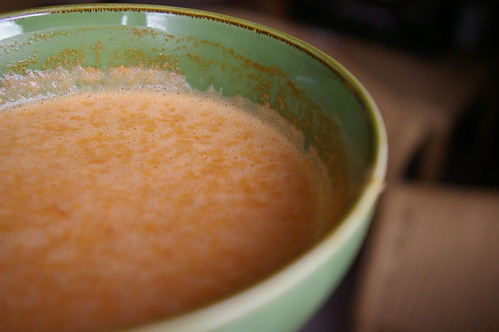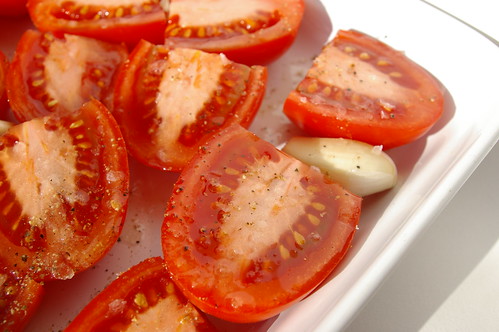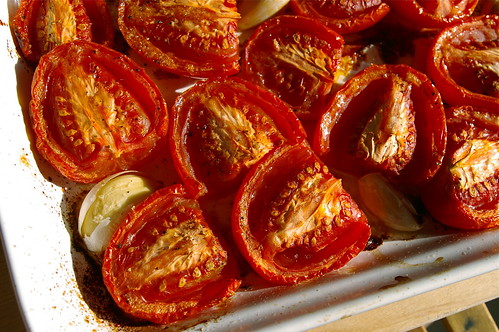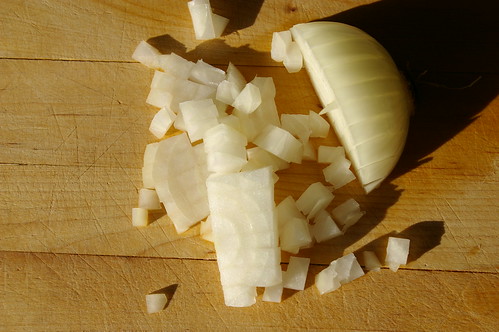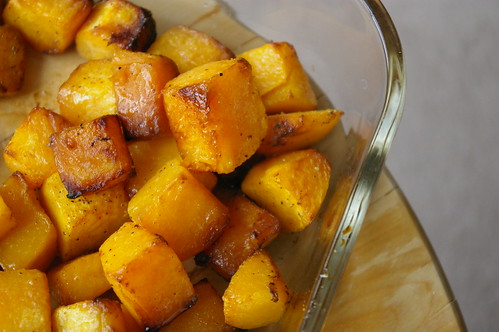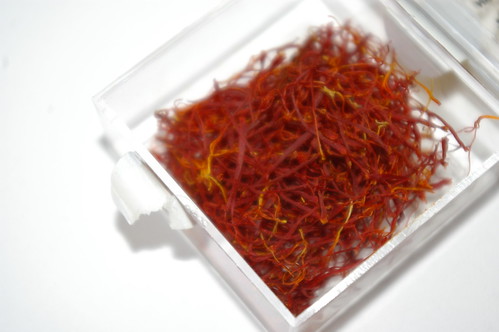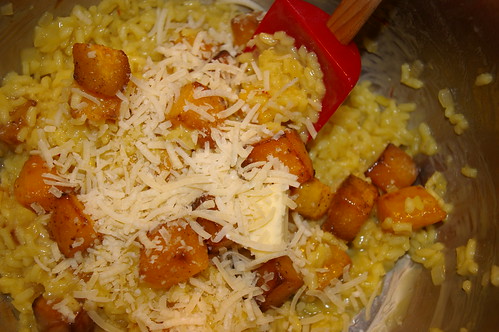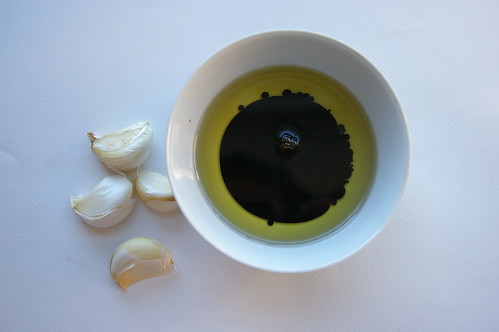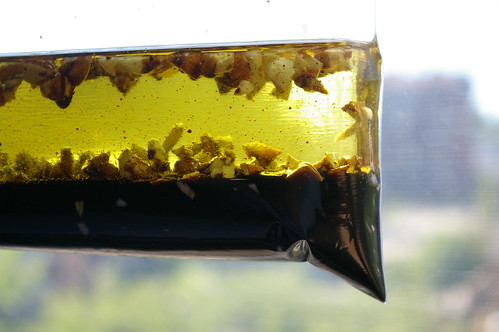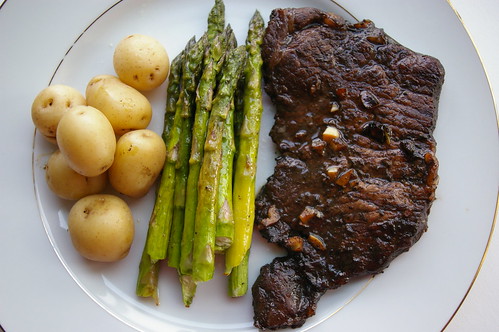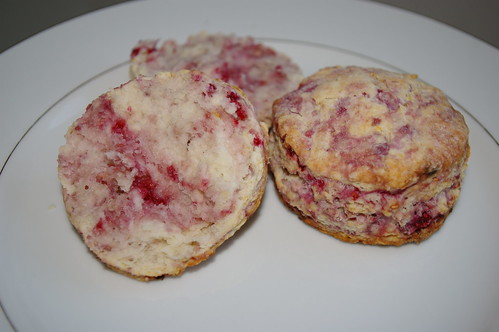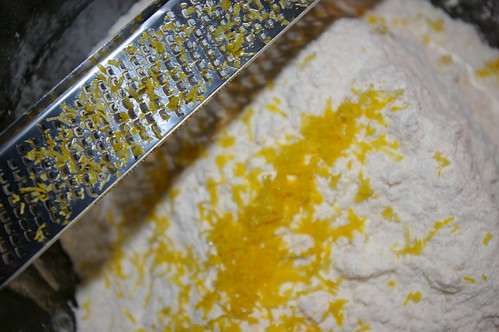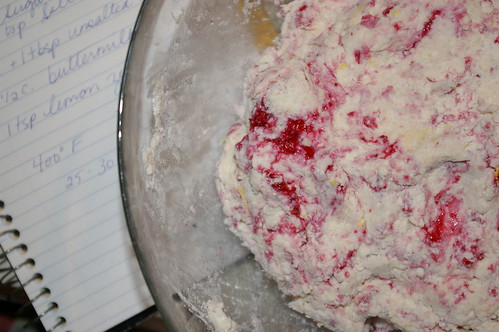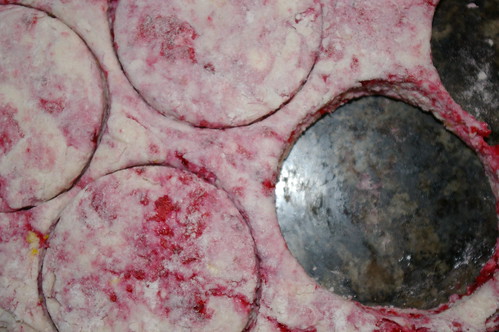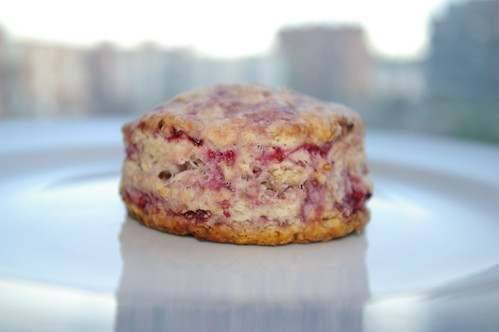We are 10 minutes from lunch service when chef informs us the rabbit legs currently roasting in the oven will need 10 more minutes to finish, on top of the additional 10 we will need to pan fry them to get the bacon they are wrapped in crispy, as well as the time we need slice them and carefully plate them next to Pont Neuf potatoes, caramelized Brussels sprouts and thin, sweet carrots.
We are officially in the weeds.
Rewind three hours and we are a group of seven people sitting in one of the classrooms just off the massive kitchen that serves as the training ground for many of SAIT’s culinary programs. School is out for the semester, but the kitchen is open to us, the students of a four-day, intensive culinary bootcamp set to put us through the paces of working in a restaurant kitchen. For eight meals, those who have signed up for the course will rotate through appetizers, main dishes and desserts, preparing two dishes per day to chef’s standards. We will then dine on the three-course meal we have prepared in the oddly empty Highwood Dining room.
At the invitation of SAIT, I am here to try out the program for one day. In the morning, dressed in my chef’s jacket and hat and oddly appropriate shoes — how very un-gwendolyn — I am excited and eager to get into the kitchen. By the end of the day, I am exhausted and have renewed my appreciation for the hard work chefs put in. I also leave, though, knowing some new skills — even if it’s unlikely I will never again butcher a rabbit. (Not that I was very good at it in the course either.)
A new program for SAIT, the culinary bootcamp is aimed at those with a solid base of cooking skills, those who have taken other continuing education-type courses on campus and are looking for something a little more challenging. The seven of us are treated similarly to the professional cooking students; we’re shown where things, are told our menu and given recipes, but are then mostly left to our own devices under the watchful eye of Michael Mandato, the chef instructor who oversaw the bootcamp.
One of the chefs on SAIT’s enviable team of cooking instructors, Michael came to Calgary after working in hotels all over North America. His New York accent, though, makes it clear where he was raised. He makes no bones about what his expectations are from us and it becomes clear early on that those are high.
This, I think at one point, is why I am likely not cut out to be a chef.
But that’s the point of the boot camp. This is not an easy-going, lunch-and-learn type of class. This is getting put through the paces of what it’s like to work in a restaurant (though thankfully not for any paying customers), with all the prep and scramble and cooking and trying to nail down timing, working backward from when your plate is supposed to hit the table. This is home ec on steriods.
I ask to join the entree team since I figure — correctly — it will be the most challenging part of the meal. Along with two other women, we are tasked with butchering rabbits and preparing the legs to be wrapped in bacon, roasted and then pan-fried, making a madeira sauce and Pont Neuf potatoes (fat, squat french fries, essentially). That’s just for lunch. For dinner, we will need to make a root vegetable gratin, a tamarind duck breast and some spiced fruit chutney for the side. And, because this is restaurant-type situation, we also need to do prep for the team taking over entrees the next day — that means searing off short ribs and wrapping and labelling them for a chill overnight in the cooler.
The rabbits — one of the first tasks — are my undoing. As in, I have no idea what I’m doing and have to repeatedly ask for help from a patient Mandato and one of my teammates, a home economics teacher well versed in skills that have escaped me.
This, I have no doubt, is partly why we are in the weeds, still waiting for our dish to come out of the oven to pan fry, to slice, to serve when the clock has technically already run out.
In a flurry, with the three of us — and a chef who I suspect would definitely be marking us down if we were in his class — working together quickly, the dish gets plated and we head into the Highwood Dining Room for a luxurious three-course lunch prepared by the bootcamp teams. A scallop ceviche starts the meal that is then capped off with a chocolate mousse.
It feels indulgent to sit down after racing around and I’m impressed with what we’ve all managed to pull together. Mandato praises and offers critiques on the dishes so we can learn where we can make improvements and it isn’t long before we’re back in the kitchen for round 2.
This time, at least, we are getting the hang of things. We know where the ingredients are, where the utensils and pots are located. There is now a rhythm to our team and we are quicker to jump in and offer to do things or help when it looks like one of us needs some assistance. The duck entree with its tamarind sauce, chutney and (ridiculously decadent and delicious) root vegetable gratin (can you decipher that this was the piece I worked on?) come together much more smoothly. (Though, as I am about to add all the different vegetables to the pot of boiling water at once, Mandato with a knowing nod and slightly cheeky smile asks if I am making sure only one type of root vegetable is going in at a time. “Yes, chef!” I say, though we both know he’s caught me from making an error that would lead to a mushy gratin.)
And as we sit down for dinner, I survey the dish, pleased that I contributed to this plate, this meal that we are all enjoying with a glass of wine.
My feet ache, my bangs are aswirl from the heat of the kitchen and being trapped under the chef’s hat and I fear someone will need to roll me to my car I’m so tired, but I have a sense of accomplishment that wipes that all away. It’s been a long time since I was a student — and I’m not likely to sign up for the two-year program — but this taste of professional cooking, this challenge of being in a massive kitchen and needing to worry about timing and plating and helping my fellow cooks, that was delicious.
For more information about the SAIT bootcamps (there’s a pastry one!), visit SAIT. The next round will run May 30 to June 2, 2017.
Thank you to SAIT for allowing me to join the class.

